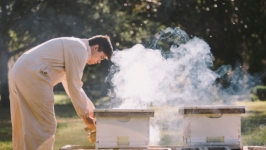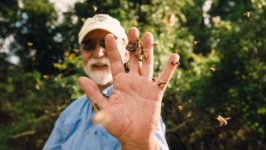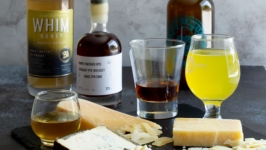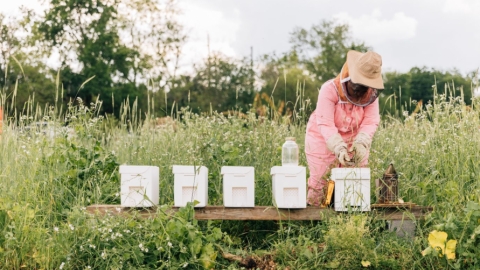Five Things Honey Bees Make
A honey bee spends her entire lifespan, roughly 40 days, making only 1/12th of a teaspoon of honey. It comes at a great cost to the bee, who essentially works herself to death. To say this resource is invaluable would be an understatement – how do you place a value on someone's life work? Honey bees are the only insect that can produce food for humans, and yet they offer so much more than just honey. While they gather resources to create honey, they secrete substances that are also beneficial for their environment and for people. Here is a list of things honey bees produce and some ways the byproducts are used.
********
Bee Pollen
Gathered from the stamen of flowers primarily during springtime, bee pollen is the main source of protein for developing larvae. There have been promising studies on the health benefits of bee pollen, but there is no concrete science. Regardless, it can be a tasty treat to add to smoothies or homemade granola.
Beeswax
Bees secrete wax from glands in their abdomen. Virgin wax is white but becomes yellow and can turn black over a long period of time. Beeswax is useful for encaustic painting, furniture polish, surfboard wax, lip balms, candles and soaps.
Royal Jelly
All developing honey bees are fed royal jelly the first three days of their lives. Only eggs selected to become queens are fed royal jelly throughout their entire development. This white, creamy substance is secreted by young worker bees. Royal jelly has been known to stimulate collagen production and is often added to skincare products.
Propolis
Made from the sap of evergreen trees, propolis is super sticky. Bees use it as glue inside the hive to hold frames in place and to fill in cracks to prevent rain intrusion. Bees mix the tree sap with other bodily fluids and beeswax to make propolis, which means it is filled with antioxidants that fight disease. This makes it great for making salves for wound care and spray for sore throats, or in the case of the ancient Egyptians, in the process of mummification.
Bee Venom
When a bee stings you, it secretes bee venom. Only female bees have a stinger and are able to produce venom. Bee venom can be used to alleviate symptoms of arthritis, Parkinson’s, multiple sclerosis and nerve pain. It can be administered by direct sting, bee venom acupuncture or injection. This type of therapy comes with risk, so be sure to consult with a doctor before grabbing a handful of bees to relieve joint pain.









